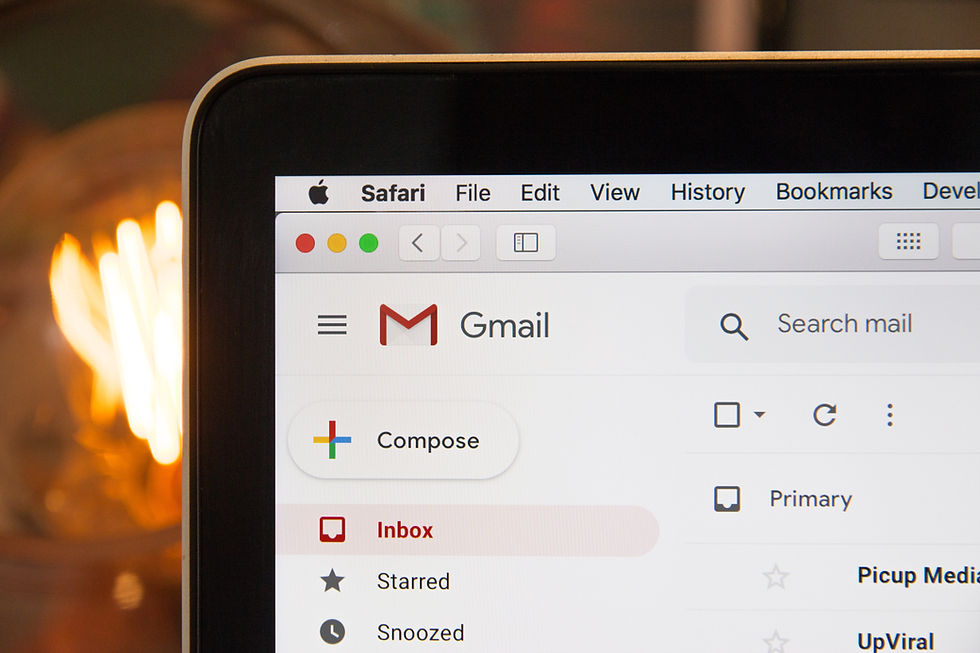6 Ways to Ageism-Proof Your Resume
- Kristin Schuchman

- Sep 23, 2022
- 6 min read
Updated: Sep 25, 2022
I’d love to say that ageism doesn’t exist. I’d frankly rather live in that world. But I’m enough of a realist to appreciate that at around age 40 or 45, we may fall prey to the subtle and not-so-subtle hints of ageism in the workplace. According to AARP, two-thirds of those over 45 years old have experienced ageism on the job.
Ageism varies by industry, with professions like law, social services, management, and office/administrative support occupations employing the most 55+ workers while food service; life, physical, and social sciences; computer technology; protective services; and construction employing the least number of 55+ employees.

A Neumark study finds that older applicants received 68% fewer job offers than younger applicants. And there are strong signs that women experience ageism much sooner. One study by Texas A&M Under revealed a sharp drop in resume ratings for female candidates over 36, compared with male resume ratings beginning to drop at age 50.
There are some protections in place. The Age Discrimination in Employment Act (ADEA) protects workers 40 years of age and older from workplace discrimination, and the Protecting Older Workers Against Discrimination Act (POWADA) was passed by the US House of Representatives in 2021 to make age discrimination cases easier to prove but has yet to pass the Senate.
It’s also worth noting that age discrimination cases account for 20 to 25% of all Equal Employment Opportunity Commission cases, which typically result in high payouts but are difficult to prove. These cases include acts of discrimination in hiring, firing, pay, job assignments, promotions, layoffs, training, benefits, and even derogatory age-related comments.
If you are over 40 and worry that ageism is affecting or will jeopardize your ability to find a job, below are just a few tips to keep your resume from getting rejected from potentially age-biased hiring professionals.
You may be thinking, “Well, okay, that’s great, but I can’t necessarily hide my age when I interview, so what do I do then?” That’s a fair point, but landing the interview is arguably half the battle for securing a new job.
Give yourself a chance to dazzle hiring managers and future employers with your knowledge, experience, and interpersonal skills once you’re sitting across from them in an interview session (or Zoom room). You’ll at least have a fighting chance at that point to project confidence, technological competency, and an energetic disposition that can ameliorate the ageist biases and preconceived notions that sadly do linger in the workplace.
Think of it as your chance to not only prove youth-obsessed employers wrong about you but to also pave the wave for other midlife workers struggling to combat age discrimination.
In the meantime, here are six tips for age-proofing your resume.

1. Ditch the Outdated Email Addresses on Your Resume
These include hotmail, aol, and yahoo and also ones that include your birth year like sheilasmith67@gmail.com. Including a gmail address is your safest bet. I know this sounds silly, but people do make judgments about our age and relevance in mere seconds, and this is a simple, low-hassle fix to ameliorate any unconscious bias.

2. Don’t List Your Mailing Address on Your Resume
Including your physical address on a resume essentially screams, “I’m over 40 years old!” even more than bragging that you learned to drive on a stick shift or that you are the greatest mixtape maker of all time. This resume trend hearkens from a time when people mailed in their resumes. Few or no millennials remember this time, so it is truly a relic from a bygone era. Leave this trend in the past with that awful marbled parchment stationery that office supply stores still stock for some strange reason.

3. Don’t List Too Few Technical Skills on Your Resume
At a minimum, I like to see my resume clients list their experience with Microsoft OfficeSuite programs like Word, Excel, and PowerPoint and with Google tools like Gmail, Chrome, Drive, Docs, and Sheets. This may seem like basic technical skills, but it shows that you’re willing to keep up with modern technology to have a Technical Skills section on your resume. List any software programs you have used or mastered. Include software frameworks like Agile and Scrum, hardware operating systems like Unix and Linux, and tech strategies like SEO (Search Engine Optimization) and UI/UX (User Interface/User Experience).
If you are comfortable in both Mac and PC environments, note this point, too. Give yourself credit for skills that may seem routine but reflect a certain ease with technology like database management, ecourse development, webinar coordination, website maintenance, data analysis, and social media content management, just to name a few. List classes and certifications that testify to your technical acumen, too. Even if technology is not a pet interest, it behooves you to demonstrate a willingness to learn and master technical platforms and machines. If you need to hone your technical chops, e-learning platforms like LinkedIn Learning, Udemy, Coursera, and Skillshare are great places to start.

4. Update your Resume Layout
Outdated resume layouts will signal to hiring managers that you haven’t applied for a job in 25 years. More conservative industries like finance, law, and accounting may not care as much, but why take the chance. Take the time to peruse newer resume layout styles to step up your game. Don’t be afraid to use a spot of color and make sure your resume is clean, quickly scannable (by human and electronic eyes), and aesthetically pleasing. Millennials and younger generations have lived in a world that is rife with a wide variety of fonts their entire lives. Even if you are still attached to Times New Roman and Arial, pick out a resume layout that presents them in a more interesting way. (By the way, the fonts that are most ATS-friendly are Times New Roman, Tahoma, Verdana, Helvetica, Calibri, Georgia, Gill Sans, Garamond, and Cambria.)

5. List Continuing Education and Certifications on Your Resume
Ageism is wrong, but we give it oxygen when we refuse to stay current and curious. By keeping your skills, knowledge and experience up-to-date with continuing education classes, workshops, and certifications, you actively prove that you are staying on top of your field and engaging with the latest trends, technologies, approaches and thought leaders. List relevant memberships in trade organizations and with licensing and certifying bodies along with years of activity, if applicable. Update any memberships or licenses that will make you stand out and list leadership roles in professional organizations.

6. Don’t Neglect Your LinkedIn and ATS/Applicant Scanning Systems
Update your LinkedIn as you update your resume, keeping an eye towards relevant keywords that will match you with the right positions and using the premium feature to see how you are matching with the jobs that pique your interest the most. While you’re doing this, use resume scanners like TopResume and JobScan.co to ensure that you are matching well with these positions do. Be willing to keep adjusting the wording in your resume and LinkedIn to optimize your chances. As annoying as this task may seem, it is de rigueur for anyone under 40, so if you want to remain competitive, you will have to suck it up and fight through your irritation. Once you do it a few times, I promise you, it becomes painless relatively quickly.
Go a step further with LinkedIn and write a few blog posts about trends in your industry and comment on others’ posts a few days a week. Carve out 15 to 30 minutes a week to optimize your LinkedIn profile, invite more connections, add skills others might endorse, and request recommendations. (While you’re at it, endorse the skills of other connections and write recommendations for others. LinkedIn has a certain karmic quality that will enhance your appreciation of the platform if you let it.)
If you have iron-clad certainty that the positions and companies you are targeting don't use LinkedIn, then updating your LinkedIn profile (or even having one) may not be necessary. But ask around before you dismiss its usefulness entirely. It isn't the warmest social media platform, but it can be a powerful tools for networking, researching career fields, and searching for jobs. You can connect with people you don't know by seeing who you might know that knows someone you would like to conduct an informational interview with or simply ask about the culture and landscape of an industry or company about which you are curious. If you do find it too overwhelmingly stuffy, try Alignable on for size.
While I acknowledge the existence of ageism and its potential for harm, I still believe that it wields most of its damage as a psychological barrier. By adopting a growth mindset, you can overcome your own fears of ageism and position yourself for success at any age.
Carol Dweck, author of Mindset: The New Psychology of Success, says, “In a growth mindset, challenges are exciting rather than threatening. So rather than thinking, oh, I’m going to reveal my weaknesses, you say, wow, here’s a chance to grow.” Try as hard as you can to act as if ageism is not a hurtle. Go forth into the working world with a willingness to be flexible and optimistic and to learn, collaborate, and grow, and age-related biases won’t stand a chance.
______________________________________________________________

Kristin Schuchman, MSW is a career counselor and author based in Portland, Oregon who works with creative and mission-driven professionals. She writes resumes and coaches individuals seeking support for career indecision, next steps, work re-entry, advancement, starting a business, and work-life-balance. She offers a free 30-minute Zoom or phone session and presently works with clients remotely. You can find her books The DIY Website Workbook and Jump Start: How to redirect a career that has stalled, lost direction or reached a crossroads on Amazon.









You can tweak it to "stow away" itself so just you would realize that it is introduced in your telephone it. Other remarkable highlights are the auto-logging out sooner or later of inertia. So when somebody keeps Discreet Relationships an eye on your gadget and you neglected to log out, your mystery is protected. Hitched individuals who need a touch of extraordinary tomfoolery come here constantly.